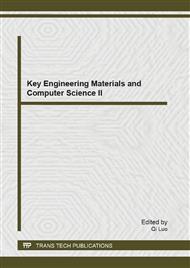p.44
p.49
p.54
p.58
p.62
p.67
p.74
p.79
p.84
Optimization of Post Weld Aging on Duplex Stainless Steel UNS31803 Grade with 23 Factorial Designs
Abstract:
Duplex stainless steel are good combination of economy, weldability and toughness and are often selected where both strength and corrosion properties are crucial. The research was study the effect of post weld aging parameter on mechanical properties. The specimen was duplex stainless steel UNS31803 grade sheet of 10 mm thickness. This experimental study aims at 23 factorial design optimizing various post weld aging parameters including solution temperature at 900 and 1,050 °C, post weld aging temperature at 650 and 850 °C and post weld aging time were set at 4 and 8 hour. The welded specimens were tested by hardness testing in heat affected zone and tensile strength testing. The result showed that both of solution temperature, post weld aging temperature and post weld aging time interaction on hardness and tensile strength at 95% confidential (P value < 0.05). Factors affecting the optimum were solution temperature 1050 °C, PWA temperature 850°C and PWA time 4 hr. at hardness optimum of 282.36 HV and tensile strength optimum of 109.37 kN. This research can bring information to the foundation in choosing the appropriate post weld aging parameters to duplex stainless steel welds.
Info:
Periodical:
Pages:
62-66
Citation:
Online since:
July 2013
Authors:
Price:
Сopyright:
© 2013 Trans Tech Publications Ltd. All Rights Reserved
Share:
Citation:


